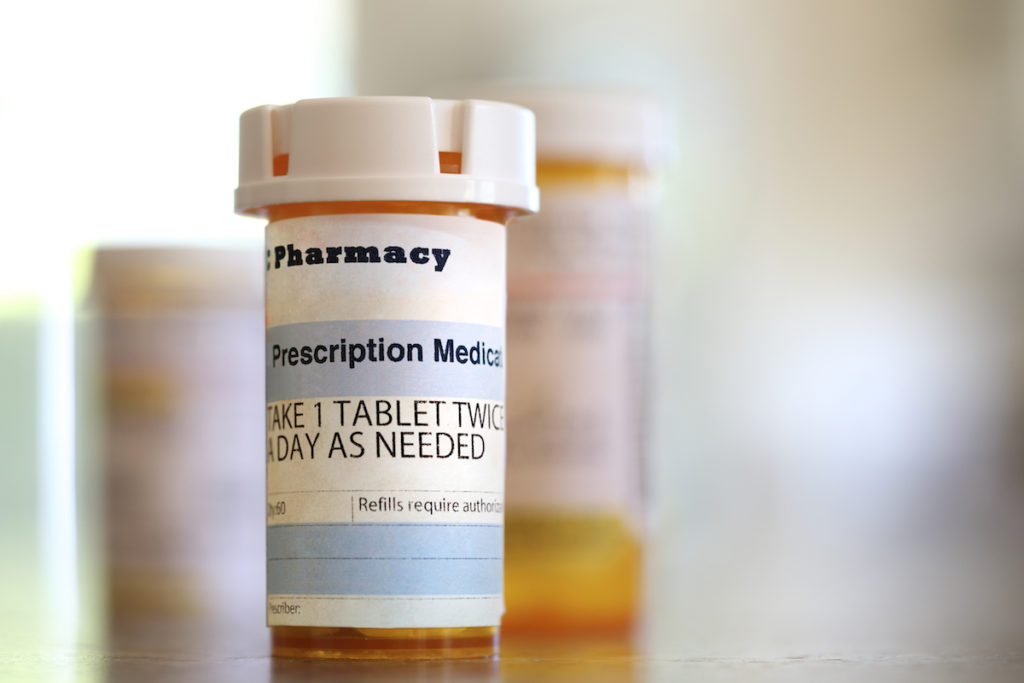While many people believe that a prescription medication is safer than illicit drugs or excessive alcohol consumption, this is not the case. Use of these prescription drugs can lead to various mental and physical health problems- including addiction and overdose.
Highly Addictive Prescription Drugs
According to the National Institute On Drug Use, the most commonly used classes of prescription drugs are opioids, central nervous system (CNS) depressants and stimulants. The increasing rate at which these drugs are being prescribed is partially to blame for their spike in popularity in recent years. While America accounts for around 5 percent of the world’s population, they consume about 75 percent prescription drugs. The number of prescriptions being written makes these highly addictive drugs easily accessible in medicine cabinets across the country- and the consequences of this are starting to make themselves clear. [inline_cta_one] According to the Substance Abuse and Mental Health Services Administration, over 50 percent of Americans get their prescription drugs for free from a family member or friend. Another 17 percent of people buy prescription medications off of a family member or friend. As prescription drug use rates continue to rise, it’s essential to know the risks associated with the most addictive behind-the-counter drugs.
Xanax (alprazolam)
Xanax falls into a class of drugs called benzodiazepines- more commonly called benzo. It is commonly used to treat panic disorders, severe anxiety and insomnia. Benzos, like Xanax, are central nervous system depressants that work by actively slowing down brain activity to reduce levels of excitement and create a calming effect on the brain and body. While these effects are what makes the drug so effective at combating insomnia and panic disorders, the blissful high is also what makes Xanax so addictive. Abusing Xanax can lead to lowered blood pressure, slowed pulse and shallow breathing. When mixed with alcohol, which is common among those who are addicted to Xanax, the risk of respiratory distress and death increases. Although commonly called Xanax, this benzo also goes by a collection of street names including candy, zannies, downers, bars and tranks. Other prescription medications that produce similar effects are Ativan, Valium, Klonopin, Librium and Halcion.
Ambien (zolpidem)
Ambien is a fast-acting barbiturate that is typically prescribed to treat insomnia. Like benzos, barbiturates work by suppressing the central nervous system to produce a calming, almost tranquilizing, effect on its user. When taken in high doses, Ambien can create feelings of euphoria and excitement. These feelings are what make Ambien such an addictive substance. As users continue to chase the high produced by Ambien, their tolerance for the drug will increase and force them to use higher dosages to generate the same euphoric effects. Unfortunately, Ambien can also produce feelings of irritability, fever and a life-threatening withdrawal process when used in extreme dosages over an extended period. A variety of other prescription sleeping pills will also produce similar effects including Sonata and Lunesta.
Adderall
Adderall is a stimulant drug primarily used to treat ADHD. In some cases, it is also prescribed to help people who suffer from extreme and chronic fatigue. The amphetamine in Adderall causes hyperstimulation throughout the brain and body and makes users feel stronger, more self-assured and energized. The extra confidence and energy allows those who use Adderall to accomplish more than they usually would without the drug. Due to this, it has become increasingly popular among college students looking to boost mental and physical performance. Adderall also suppresses appetite and is used by those looking to lose weight. Long-term Adderall use can lead to addiction, hallucinations, tremors, dizziness, heart palpitations, depression, anxiety and headaches.
OxyContin (oxycodone)
OxyContin is an opioid-based prescription painkiller. It is often used to treat patients with acute or chronic pain. While it is very effective at treating pain, OxyContin has a high potential for use and addiction. Due to this, it is generally prescribed only as a short-term pain management solution. OxyContin doesn’t necessarily reduce pain, but it changes the central nervous systems’ perception of pain. It can also trigger an emotional response due to a release of the feel-good chemical in the brain- dopamine. This change in brain chemistry can make users feel a euphoric, pleasant high, and is also what makes OxyContin one of the most highly addictive drugs. When used, OxyContin can lead to coma, respiratory distress, overdose and death. OxyContin in the brand name for a drug called oxycodone. Users also refer to it as cotton, oxys, O.C., or kickers.
Codeine
Codeine is a narcotic pain reliever that is commonly used in cough medicine to alleviate uncomfortable symptoms of upper respiratory infections and severe colds. It is also prescribed to help relieve symptoms of irritable bowel syndrome. When the codeine is broken down by the liver, it reverts to morphine. Prescription-strength cough syrup that uses codeine has increased in popularity since the 90’s as hip-hop artists began glamorizing purple drank- a mixture of codeine cough syrup, lemon-lime soda and a Jolly Rancher hard candy for extra sweetness. Codeine is responsible for making users feel blissful, relaxed and light-headed, but it can also cause coma, dizziness, weight loss and depression. When mixed with alcohol or taken in large doses, codeine can lead to coma and death. Common prescription cough syrups that use codeine are Robitussin A-C and Empirin with Codeine.
Vicodin (hydrocodone)
Like OxyContin, Vicodin is an opioid painkiller. It is often used to treat chronic and post-operative pain. However, unlike OxyContin, Vicodin also contains acetaminophen to help reduce swelling and fever. Vicodin changes the way the body feels and responds to pain. While it can give users a pleasant high, it’s the change to the brain chemistry that occurs when using Vicodin that keeps people coming back to this drug time and time again. Despite its euphoric side effects, long-term use of Vicodin can cause sedation, impaired coordination, slow heart rate, respiratory distress, paranoia, brain fog and depression. While Vicodin is the most common name for hydrocodone mixed with acetaminophen, other brand names include Lortab and Lorcet. A drug is not automatically less dangerous because it has been prescribed by a doctor. In most cases, drugs prescribed by a physician can be equally as harmful as illicit drugs when used- and the current state of America’s opioid crisis serves as a painful example of this. With over 100 people dying every day due to an opioid overdose, patients must be made more aware of the highly addictive and deadly nature of the drugs they are being prescribed.


